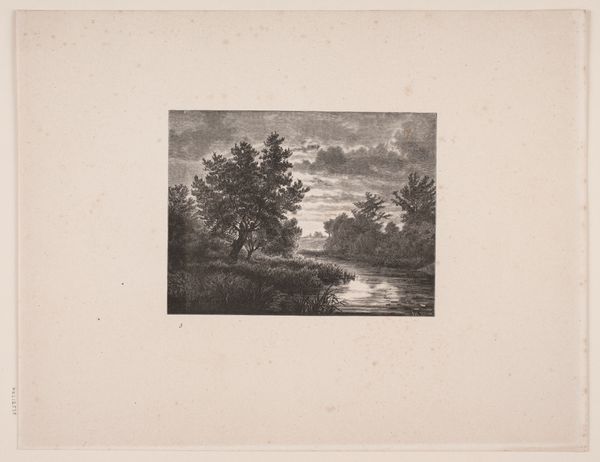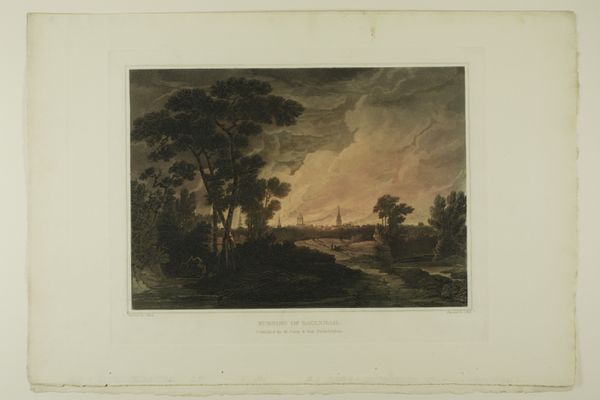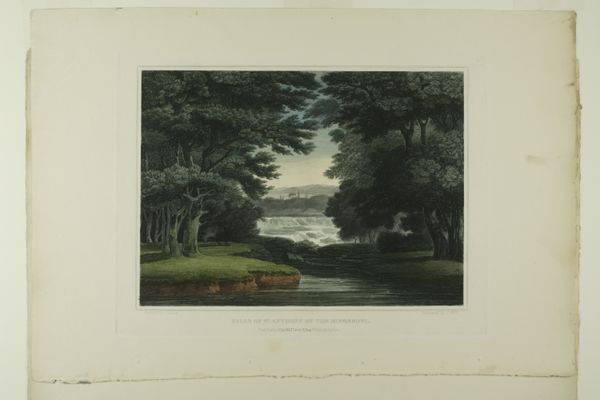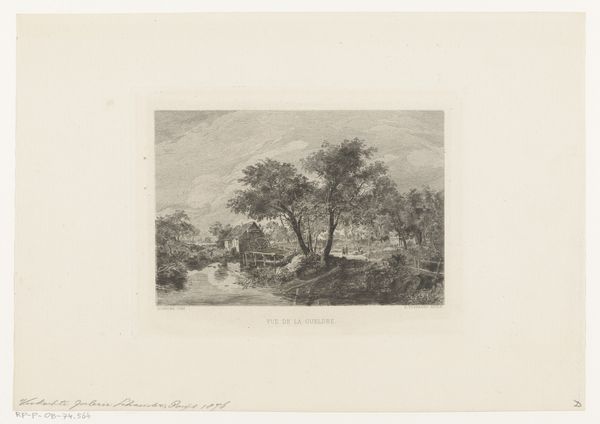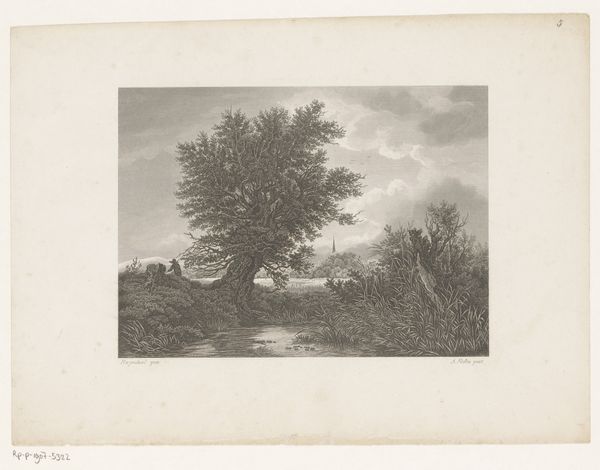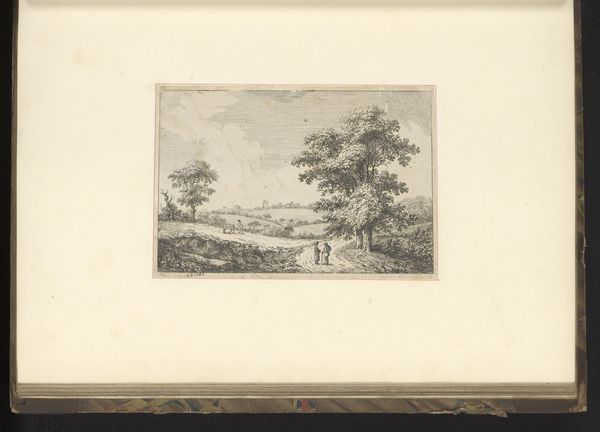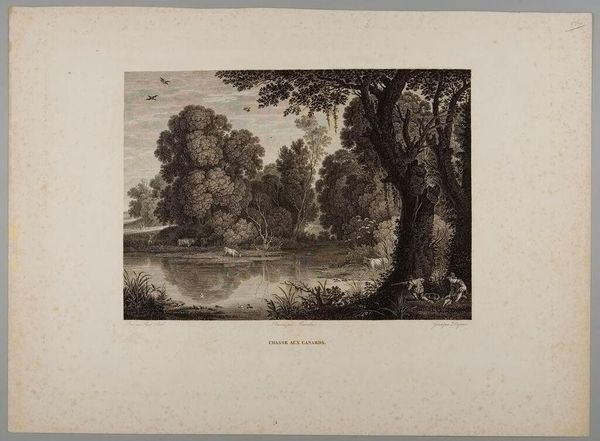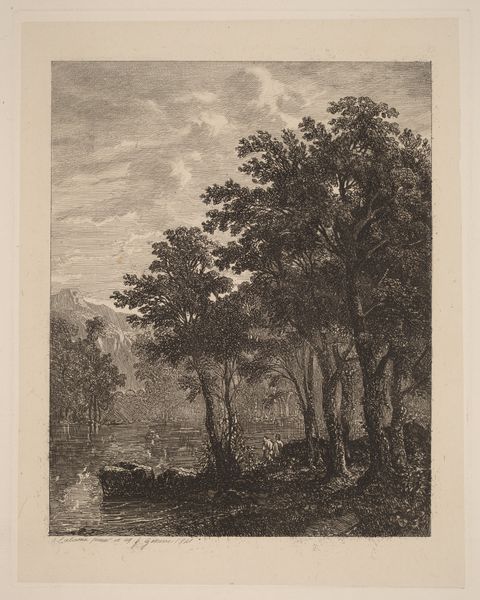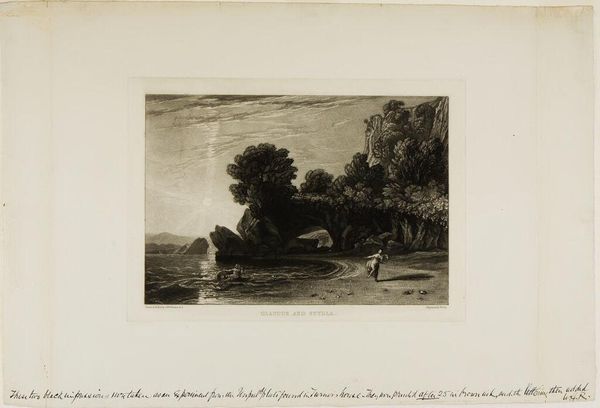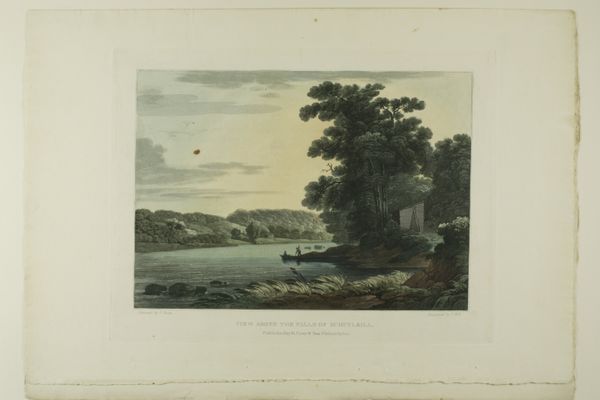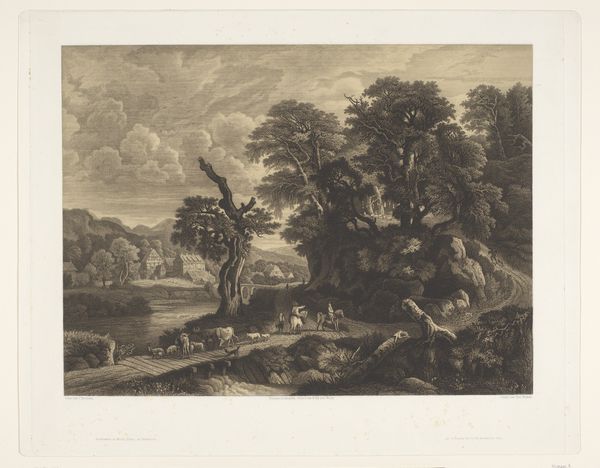
Spirit Creek; Near Augusta, Georgia, plate two of the second number of Picturesque Views of American Scenery 1819 - 1821
0:00
0:00
drawing, print, paper, watercolor
#
drawing
#
water colours
# print
#
landscape
#
paper
#
watercolor
#
romanticism
#
united-states
Dimensions: 253 × 354 mm (image); 302 × 387 mm (plate); 390 × 569 mm (sheet)
Copyright: Public Domain
Editor: This is "Spirit Creek; Near Augusta, Georgia," a watercolor from around 1820 by John Hill, part of his Picturesque Views of American Scenery. There's such a strong contrast between the shadowed woods and that cluster of trees illuminated almost supernaturally; it's a bit unsettling, but beautiful. How do you interpret this work? Curator: Immediately, the "spirit" in the creek's name calls to mind a pre-colonial sense of place. The landscape embodies not just geography, but also memory and emotion. Think about the artistic and cultural memory embedded in this seemingly untouched scene. Hill offers this 'picturesque view’-- how much of it is shaped by what he *wants* to see or to reveal, and for whom? What cultural stories are hidden beneath the surface? Editor: That's fascinating, this idea of hidden stories. I hadn’t thought of the name that way. Are you suggesting the imagery invokes a sense of loss or something similar? Curator: Perhaps a dialogue, not just loss, but continuity. The interplay of light and shadow, which you astutely observed, functions symbolically. Shadow often represents the unknown or the past. What's illuminated could stand for a future… perhaps an uncertain one, given the turbulent clouds. Are we meant to consider the consequences of progress, as it's inevitably going to disrupt this tranquil place? How does this Romantic style invite you to meditate on these themes? Editor: It really brings out the tension. So it’s not just a pretty picture, it’s posing some difficult questions about America’s relationship with nature and its own history. Curator: Exactly. Images are powerful containers of cultural memory, sparking reflections about who we are, and where we are going. Editor: This makes me appreciate it so much more; the artist asks us to consider the symbolism and history behind the image. Thank you.
Comments
No comments
Be the first to comment and join the conversation on the ultimate creative platform.
